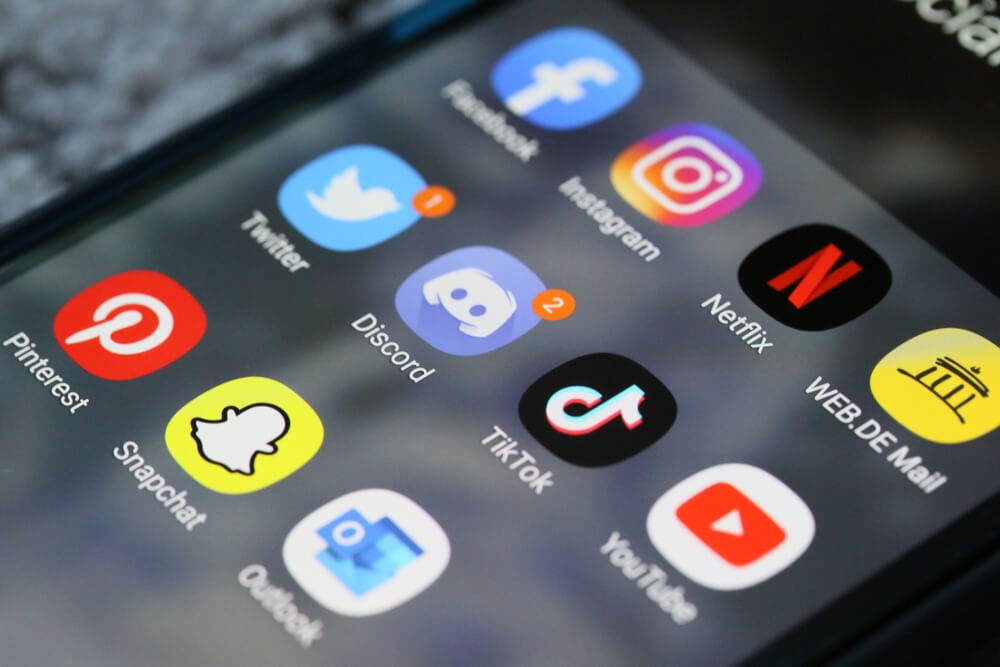It is not known whether in a few years social networks will be evaluated as the most harmful and useless element of this wonder called the Internet, perhaps the studies that have been, are and will be carried out, longitudinally and transversally, reveal that the ills of social networks for physical and mental health are greater than one imagines.
We do not yet have enough data to support an absolute conclusion, but many studies already provide important information about how we use social media, which can apparently affect psychological health depending on the person’s personality, the time they spend on them, the type of social. network or the age at which they start using them.
- Leaving aside their good or bad use.
- It is known that they can become addictive.
- Like any other substance.
- Because they seem to act on the neuronal strengthening circuits.
- Tolerance and withdrawal phenomena have also been observed.
We have all felt or perceived the feelings of inferiority, anxiety and even anxiety that trolls can project in their comments or that are provoked by photos full of photoshop, illustrating an incomplete scenario or different from reality.
While the negative impact of social media ills on our mental well-being was suspected, a new study has struck social media.
It is concluded that Facebook, Snapchat, Instagram and Twitter can seriously damage the mental health of young people between the age of 14 and 24. Instagram is believed to be the most harmful social network for young people, according to the study, published by two organizations, the Royal Society for Public Health and the Young Health Movement.
In this study, nearly 1,500 young people between the age of 14 and 24 shared with researchers the impact they felt when using the five social networks, in addition to YouTube, through 14 different criteria: loneliness, self-perception, anxiety, stress or harassment. Of all, Instagram received the worst rating.
Snapchat, Facebook and Twitter were also not registered. The impact of the three networks would essentially be negative for well-being. Researchers support the idea that they support anxiety. Only YouTube was considered a positive social network, although some users believe that the site and its content make them sleep less.
“It’s interesting to see how Instagram and Snapchat have been listed as the worst wellness and mental health networks. Both platforms are very image-oriented and seem to cause feelings of inferiority and anxiety among young people,” said Shirley Cramer, executive. director of the Royal Society for Public Health, one of the two organizations behind the study.
Instagram can give us the feeling of being a network with very little content, lacking stories: on this social network what you see, what is exposed and what is shown in the photos is the main objective to be part of it. Not only do we follow friends or acquaintances, but through hashtags and public profiles, we can see famous characters and others who are already known through Instagram.
It is also the most widely used social network for young people, which presents significant risks, as these young people are in a process of personal construction and the acquisition of values for life in society, and social networks show them that effort and dedication to a study or trade are worth less than a pose.
Some social networks are no longer a way to connect with others, but an advertising space for many brands, networks have become a business network and users are their main consumers, many brands even see an opportunity in the fact that mothers advertise certain brands used by their children, turning the little ones (and not so young) into a product.
If you see a shallow, empty, un promotion person who has thousands of followers, you may consider that “he must have something,” which is important to look as much as possible with him. They’re going to start acting abnormally, are they going to start loving?and look at things that don’t really catch their attention, so you’re fragile, I can feel, break down, disintegrate.
Lots of photos, clothes, houses, trips, friends, games, kisses or hugs. For each account that brings something different, there are 10 other accounts that seek to impact through a powerful and seductive fantasy by emptiness.
We can’t resist looking at nice photos from time to time, it’s even positive that we’d like to look at them and have a similar image from time to time, make a similar trip, but what’s the job market today?What kind of contracts do young people have to manage to achieve a decent life project, what is the distance between images and the life offered by social networks and what can we achieve in real life ?, do we want to do that?Do we really need this for a living?
When the social networks in which you spend a large part of your time do not represent anything that you really find, doubts arise about your conception of life, of society, of the value of effort and work, of the will to undertake.
Young people, and not-so-young people, can see in this virtual reality attractive values that they do not find in the “hard reality”, and begin to reconsider in their lives the value of formation, work, effort, involvement in an intimate relationship, etc.
There is no doubt that our self-image is built largely by the references we receive from the outside, however, in some places these references appear as adulterated as on social networks, in some places we may seem so small when in fact we have the opportunity to be very high.

